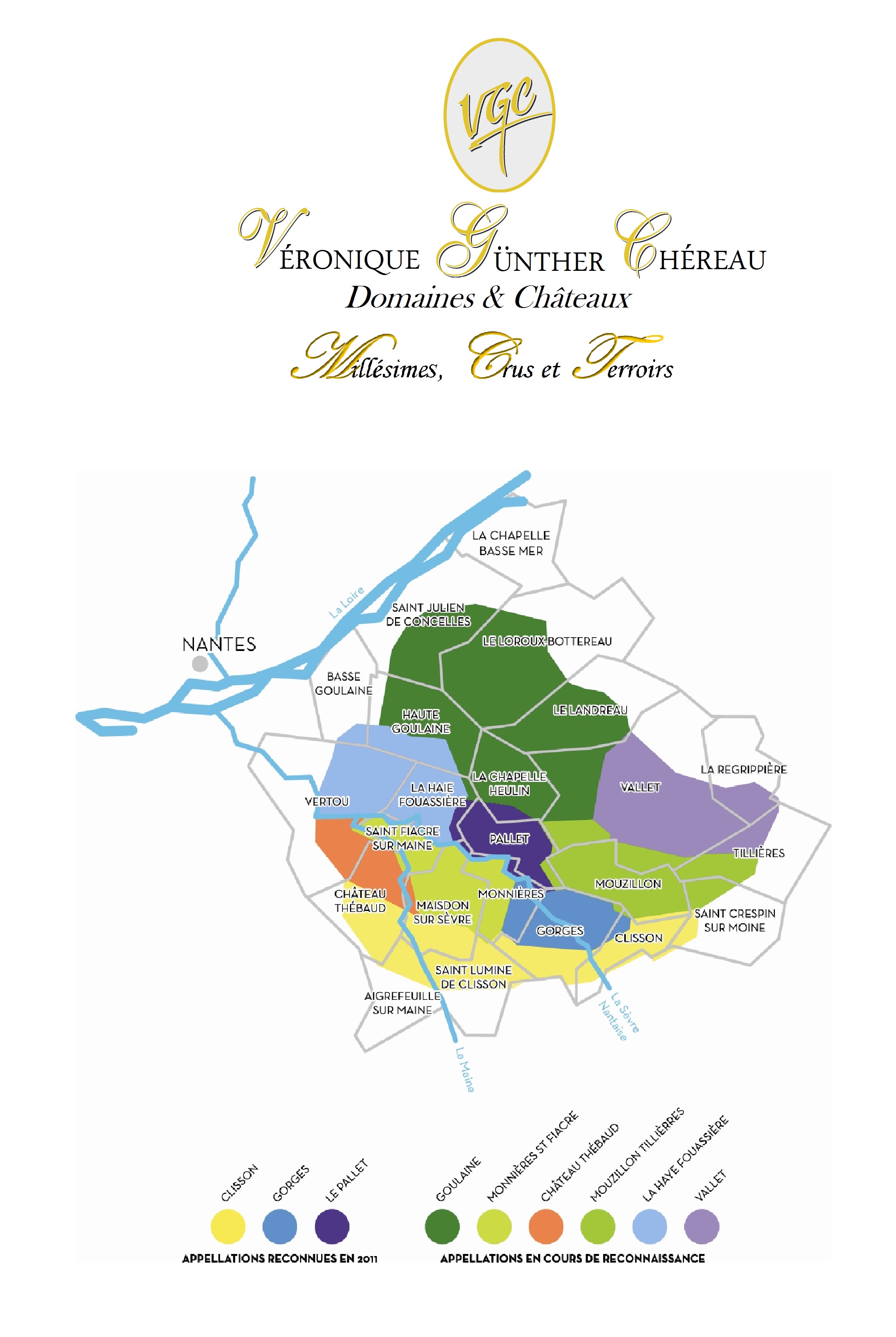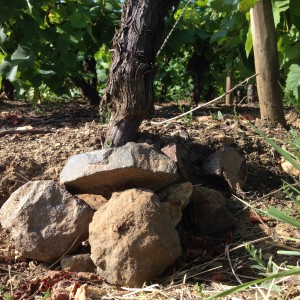
The Estate
Formerly a 300 hectare property that was split up during the French Revolution, Château de la Gravelle now spans 15 hectares and is located in the town of Gorges, France in the heart of the Sèvre et Maine appellation. The estate, managed by Véronique Günther Chéreau, is home to buildings that date back to Louis XIII, including its classic windmill (featured on the bottle label) which is a typical feature of the Nantes region. The vineyards have a unique soil structure composed of volcanic rock (or gabbro), shale, and other sedimentary rock, a feature that gives the resulting wines their elegance and exceptional bouquet. Starting in 2010, the estate converted to an organic operation, and continues to employ organic methods to this day.

Map of Muscadet appellations

Muscadet Sèvre et Maine
The Vines: The Melon de Bourgogne was first planted in the Nantes area after the frost of 1709 that wiped out all of the vines in the region. This Burgundian grape variety has found its vocation by adapting wonderfully to the Nantes terroir.

The volcanic rock soil of Chateau de la Gravelle
The Soil: The vineyard of the Château de la Gravelle has an uncommon terroir; its subsoil is composed of a volcanic rock called gabbro and covered with a layer of clay.
Vinification: The wine is vinified on its lees, or “sur lie.” The lie, or dead yeast cells, is the result of natural sedimentation of the solid elements of the wine. After alcoholic fermentation, the wine rests on its lees throughout the winter until bottling at the end of March. It is never racked, which allows the conservation of a small quantity of carbon dioxide, giving the wine a fine beading, a quality that is so exquisite and appreciated by connoisseurs.
Tasting Notes: This Muscadet Sèvre et Maine is a classic wine of the region with much body and liveliness. It is best served with shellfish such as lobster and crawfish, and most other seafood as well. It is also highly enjoyable on its own as an aperitif. Because of its structure, it goes well with buttery dishes.


